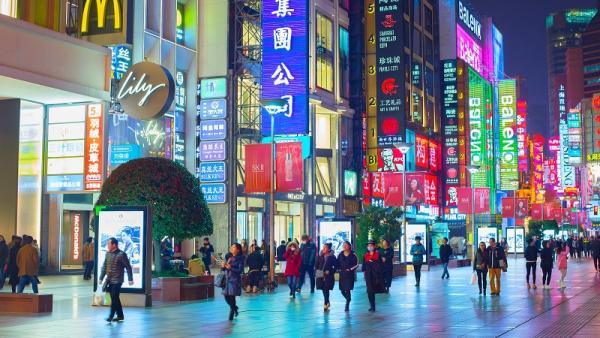The killer fact about the Chinese middle class

Bob Carr, Director, Australia-China Relations Institute, University of Technology Sydney |
This article appeared in The Sydney Morning Herald on July 27 2017.
Behind China’s recent 6.9 percent growth in GDP lies a bigger fact: between 2009 and 2030, the country will add 850 million to its middle class. I would call that a killer fact.
Nothing else on Canberra’s agenda – talk about innovation, relations with India or tax cuts for business – competes with that statistic for its potential impact on Australian living standards. It is equivalent to a new continent emerging somewhere to Australia’s north with 850 million more consumers asking Australia to fill its supermarkets, sell them places in our schools and universities, invest our expertise in aged and health care and let them come as tourists, investors and cashed-up migrants.
A killer fact that sweet deserves to be interrogated. To what extent can we trust it?
It was presented in a 2010 OECD working paper by Dr Homi Kharas, now co-director in the Global Economy and Development program at the Brookings Institution. His prediction was that by 2030 Europe would add only 16 million to its middle class. Small stuff, and North America’s middle class was set to shrink by 16 million. In this context, 850 million more middle-class Chinese dominate world economic prospects. That means the Chinese middle class will grow from 12 percent of its population in 2009 to 73 percent in 2030.
By middle class, Kharas means household income equivalent to between $US16,000 ($20,254) and $US160,000 per year, a widely used definition.
I recently learnt that Kharas had released a new report, this one for Brookings. He has had access to more accurate data. For that first survey, China had provided price data for only 11 cities or provinces. The latest was able to cover all provinces. This has enabled a more accurate mapping of the middle-class explosion.
The new report confirms China’s middle class growth is on track.
Kharas has, however, updated one essential: the spending of this expanded middle class is already much greater than in his original study.
The original study forecast that China would account for $US10 trillion in consumption, or 18 percent of the global total. That compares with $US4 trillion and 7 percent in the US and $12.8 trillion and 23 percent in India.
The new study shows China’s spending will reach $US14.3 trillion, accounting for 22 percent of the global total. By contrast, projections for India’s share have contracted: middle-class spending there will be worth $US10.7 trillion and 17 percent. When I spoke to Kharas about his latest findings, he told me India’s performance was disappointing: ‘We reduced our estimates of India’s growth. It’s not doing as well as China and South Korea did at comparable stages. It should be growing at double digit rates.’
The projections for the US middle class have not changed: it will account for just 7 percent of global spending.
Kharas says that in North America and Europe, the middle class is being ‘squeezed between two ends, growing even slower than overall population growth. Some households are falling below the middle-class threshold, while others are escaping and becoming rich’.
This latest update confirms China’s re-emergence as the world’s biggest economy.
This is consistent with the eloquent meditation on Australian foreign policy delivered by Stephen FitzGerald, our first ambassador to the People’s Republic of China (1973-1976). In his Whitlam Oration in March, FitzGerald spoke about the age of Vasco da Gama. This, he said, was the era of Western European dominance of the globe’s economy and politics.
FitzGerald said the Vasco da Gama era was now ending. The 2007 global economic crisis showed a wobbly, weakened West and marked ‘the beginning of the Sinic Era’.
Kharas said: ‘The change in China’s global market share of income as a percentage of the world’s economy is happening much faster than it did for any country ever – faster than the UK in the industrial revolution, than the US in the 1920s, than Japan in the 1950s. When you add the disruption of China to that of India you are looking at change six to 10 times faster than these other historic transformations.’
All this before the recruitment of that additional 850 million is complete.
Killer fact indeed.
Author
Bob Carr is director of the Australia-China Relations Institute at the University of Technology Sydney. He is the longest serving premier of New South Wales and former Australian foreign minister.

